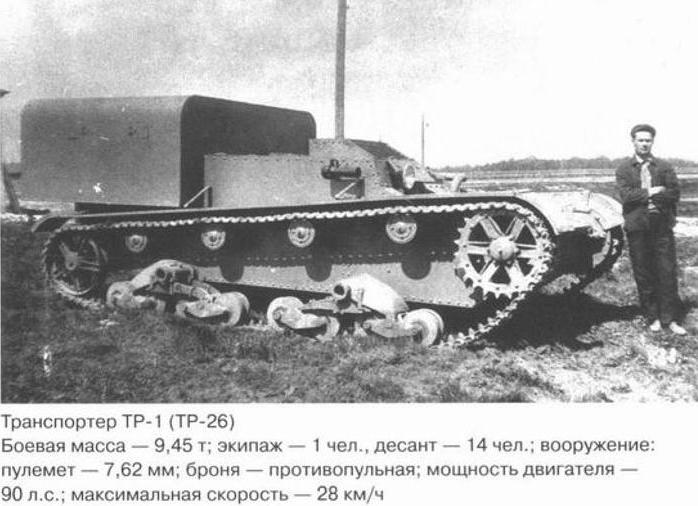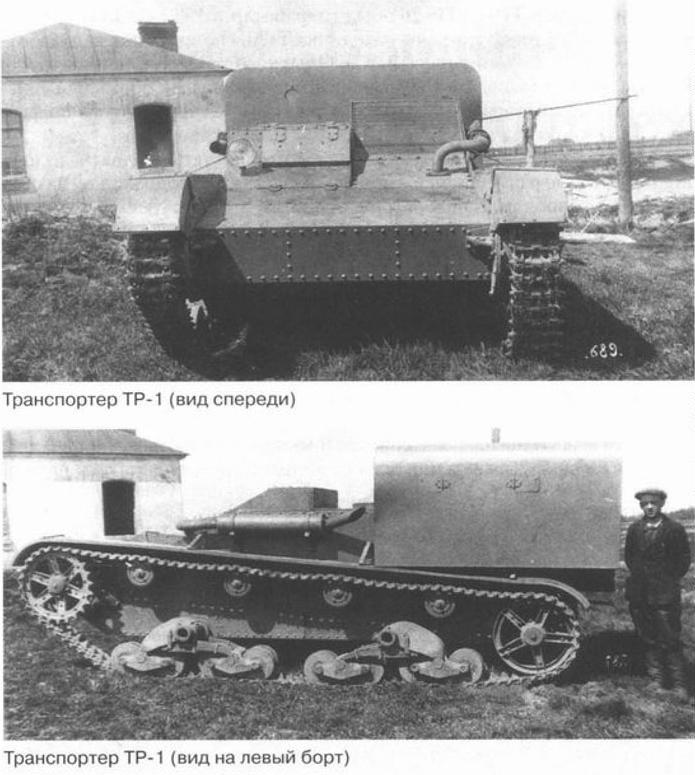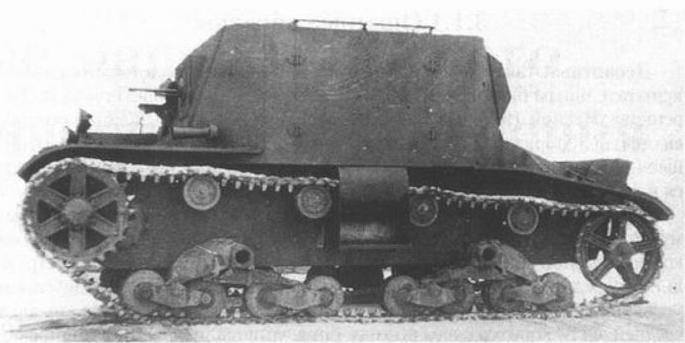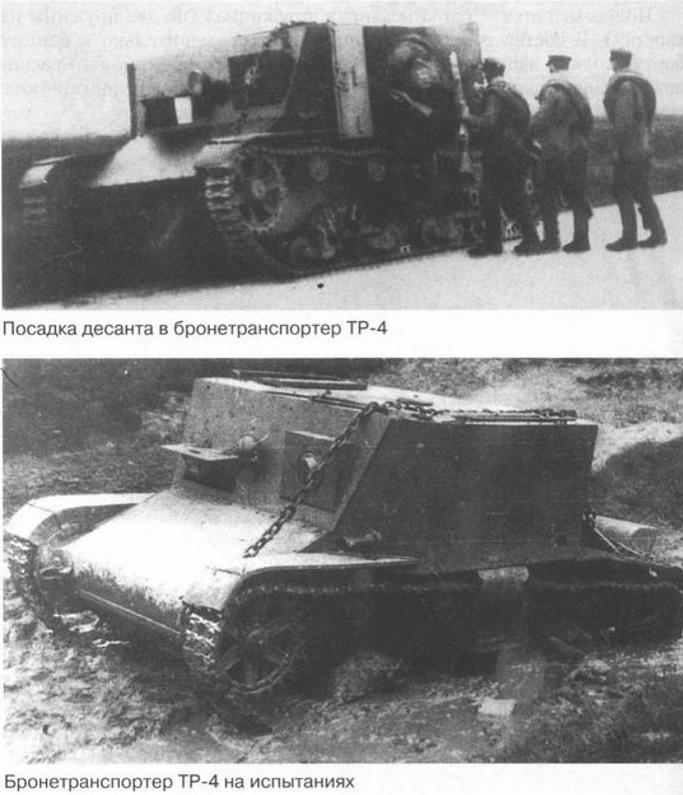Source: Yuri Pasholok’s blog
Hello everyone,
I follow Yuri Pasholok’s blog, as he sometimes posts very interesting scans of documents and photos, that I repost and translate on occasion (with full credits given to him of course). Today, we’ll have a look at another of his posts. This time it’s a report from January 1933:
The report object are the armored troop and materiel transports, built on the T-26 chassis: the TR-1 (also called TR-26) and TR-4. The report mentions the TR-1 to be equipped with a 90hp “Hercules” (“Gerkules” in Russian) engine and the fact the project works on it are 100 percent complete, drawings are 95 percent complete and their release to workshops is 90 percent complete. The TR-4 has a different (new) hull compared to TR-1, prototype drawings are 100 percent complete and their release for mass production is 75 percent ready.
The report also mentions an attempt to upgun the T-28 with 2 various 76mm main guns – one of them being the semi-automatic PS-3 short gun, intended to replace the 1927 pattern short field gun previously mounted on the T-28.
Back to the transporters however: not that much is known, so I did a little digging and here they are.
TR-1 (also called TR-26)
The TR-1 was developed in 1932-1933 based on the T-26 hull. The design was finalized by the design bureau of the Kirov plant No.185 in Leningrad. A prototype was also made there in Summer 1933 and from September 1933 to February 1934 it was tested on an army proving ground. It was designed to carry 14 troopers in a box-like superstructure. It was powered by a 90hp “Hercules” water-cooled engine, placed in the middle of the vehicle, on the left from driver’s position. This required a serious redesign of the drive train in order to make the vehicle functional. The armor of the crew compartment was made from rolled plates and was only 6-10mm thick, protecting the soldiers from common bullets. The armor plates were welded and riveted (both methods were used). The crew and the soldiers both exited the vehicle via double doors, situated on the back of the vehicle. Alternatively there was a hatch on the top of the vehicle. The frontal and side armor also had “portholes” for the crew to fire their guns out of the vehicle, these were covered by armored screens when not used.
However, it was found out that the troops’ position in the vehicle is very uncomfortable, there was not enough space. Although the tests showed the need of the Red Army to equip its troops with APC’s, it was designed to redesign this vehicle for improved comfort.
Characteristics:
Weight – 9,45 tons
Crew – 1
Soldier capacity – 14
Armament – one 7,62mm machinegun
Armor – protection against handguns and rifles only
Engine – 90hp Hercules
Maximum speed – 28km/h
TR-4
In 1933, the Kirov plant No.185 also developed another APC model based on the T-26 chassis: the TR-4. Three prototypes were made, one of which was tested from 1933 to early 1934 on proving grounds. It was not accepted in service and was not mass-produced.
The vehicle was designed to carry 15 people in a box-like superstructure, located in the middle of the vehicle instead of the turret and the turret supporting hull of the T-26. The engine was located in the rear part of the vehicle and it was separated from the soldiers carried by a special barrier. It was possible to access it via two hatches. Just like the TR-1, this vehicle also had only one man crew. This crewman (driver) was sitting on the right side of the vehicle and could peek out via an armored hatch, combined with a vision slit.
The crewman and soldiers exited the vehicle via doors, located on the sides of the vehicle. Furthermore there were escape hatches on the floor of the soldier compartment. The soldiers were sitting on two benches at the side of the vehicle, plus five folding seats, installed around the driveshaft, running thru the vehicle. The vehicle was armed with one 7,62mm DT machinegun, installed in a special ball mount – the gun had a supply of 4980 bullets. For proper air ventilation, a ventilator was installed on the back of the vehicle (covered with armor from the outside).
Just like the TR-1, the TR-4 also protected its crew and cargo only from bullets, having 6-10mm thick plates. This time, the plates were welded, not riveted. The side and rear armor was slightly angled. The vehicle was also powered by a 90hp Hercules engine with slightly increased range, compared to the TR-1.
Characteristics:
Weight – 9 tons
Crew – 1
Soldier capacity – 15
Armament – one 7,62mm machinegun
Armor – protection against handguns and rifles only
Engine – 90hp Hercules
Maximum speed – 28km/h






How on earth do 15 people fit in there?
A sardine can comes to mind :D
Why do you think the project was scrapped :)
Right. “Like shotgun against fishs in a barrel”.
Panzer I Ausf. C is super effective!
look like nice targets…
shoot that thing with a MG42, and that would scare the troops inside pretty well
I think that 8x57mm bullet would outright penetrate that “armor” (at least at close range and when using concentrated fire)
Since there is no exposive ammo inside, it would just kill the guys inside.
Also, try fitting 15 soldiers + driver inside while still being able to respond to surroundings..no wonder why it was cancelled.
Yeaaaahno. The Great War “rhomboids” didn’t boast any thicker skins and were quite rifle-proof, that being something of a minimum requirement for anything to be termed an “armoured vehicle”.
It’d take a very foolish engineer indeed to design a “battle taxi” that didn’t protect its passenger from *that* much, seeing as how that’s the whole point of the exercise in the first place.
Wait. We had similar project wtih BT tanks: BT-43.
http://ww2db.com/images/vehicle_bt6.jpg
Well, atleast there is no shortage of space…
I see nothing but bad reports from the front about this new armored personal carrier. They could have made it so much better.
So did the Soviets ever experiment with half-tracks like the M2/M3 series or the Hanomag?
Hi, yeah this paragraph is truly nice and I have learned lot
of things from it regarding blogging. thanks.